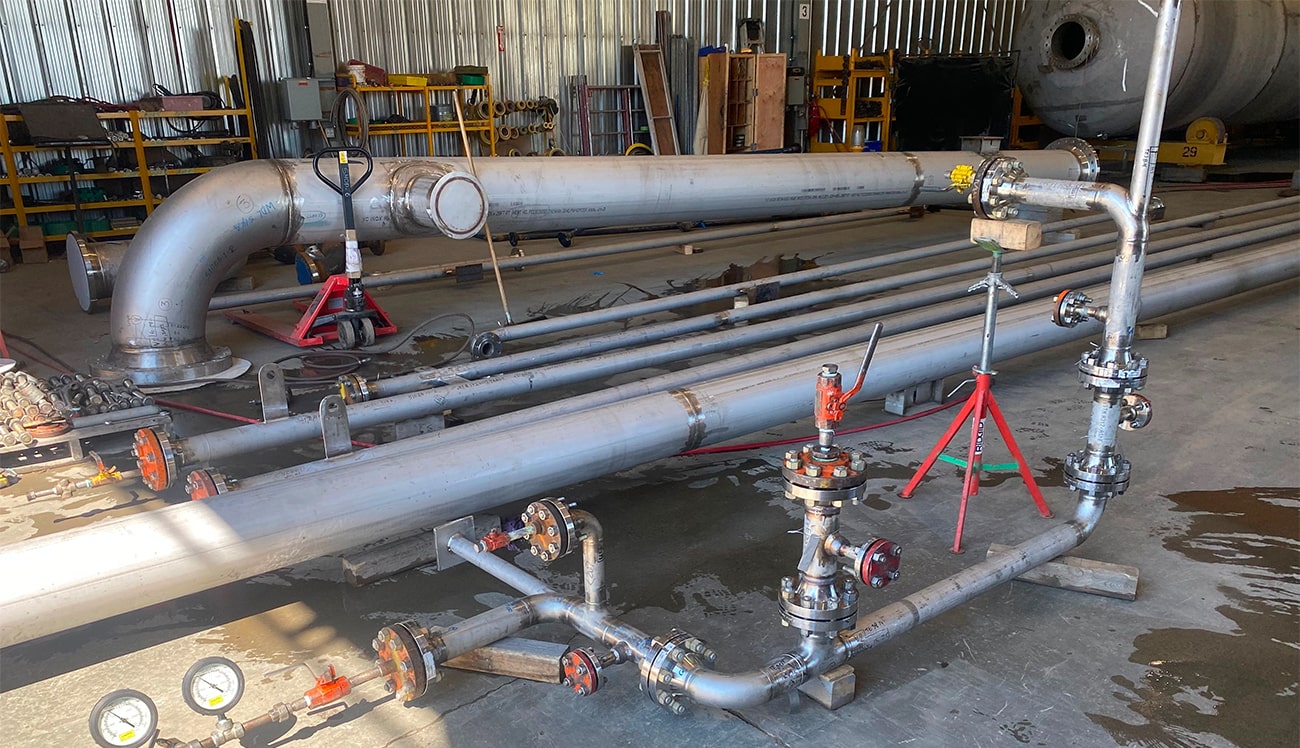Simplify Your Job: Trustworthy Pipeline Welding Inspection Experts at Your Solution
Simplify Your Job: Trustworthy Pipeline Welding Inspection Experts at Your Solution
Blog Article
Comprehensive Review of Pipeline Welding Examination Treatments
Pipe welding evaluation procedures play an essential role in assuring that welded connections meet stringent industry standards and specifications. From meticulous pre-welding assessments to extensive post-weld analyses, a distinct evaluation procedure is necessary for keeping the architectural strength of pipes.
Pre-welding Inspection Preparations
Prior to beginning the welding procedure, thorough pre-welding assessment preparations are necessary to guarantee the honesty and quality of the weld joint. These preparations entail a thorough evaluation of the materials to be welded, the welding tools, and the work atmosphere. By carrying out comprehensive pre-welding evaluation preparations, prospective issues can be recognized and settled early on, leading to high-grade and trusted weld joints.
Welding Treatment Certification
Comprehensive pre-welding examination preparations lay the structure for the vital process of Welding Treatment Qualification, making sure the integrity and top quality of the weld joint. Welding Procedure Credentials (WPQ) is an important action in the welding process that entails testing and certifying welding procedures to assure they meet certain standards and demands. The WPQ procedure usually consists of welding procedure spec growth, welding procedure certification screening, and documentation of the outcomes.
Throughout welding procedure requirements advancement, essential details such as the welding procedure, welding products, joint style, and welding specifications are defined to develop a thorough procedure. Ultimately, welding treatment qualification testing is carried out to confirm the proposed procedure's stability. This screening often involves welding test vouchers that undergo various mechanical and non-destructive tests to evaluate the weld's high quality and adherence to the defined requirements.
In-process Weld Examination
Throughout the welding procedure, in-process weld inspection plays an important function in making certain the top quality and integrity of the weld joint - Pipeline Welding Inspection. This kind of inspection involves keeping track of the welding specifications, examining the weld grain formation, and finding any kind of possible defects or interruptions as they happen. By carrying out in-process weld evaluations, welding operators can quickly deal with any issues that may emerge, therefore preventing more issues and making sure that the last weld fulfills the needed specifications
Common approaches used for in-process weld assessment consist of visual examination, liquid penetrant screening, magnetic fragment testing, ultrasonic screening, and radiographic screening. In general, in-process weld examination is vital for keeping the quality and dependability of bonded pipes.
Non-destructive Testing (NDT)
Non-destructive Testing (NDT) is a crucial technique used in pipe welding assessment to analyze the integrity of weld joints without triggering damages to the bonded framework. By utilizing various NDT methods, examiners can review the quality of welds and identify any type of flaws or stoppages that may compromise the structural stability of the pipeline. Typical NDT techniques made use of in pipe welding examination consist of Radiographic Screening (RT), Ultrasonic Screening (UT), Magnetic Particle Testing (MPT), Liquid Penetrant Testing (LPT), and Visual Testing (VT)
RT involves the use of X-rays or gamma rays to generate images of the interior framework of the weld, enabling inspectors to spot defects such as porosity, cracks, or insufficient combination. Additionally, VT entails aesthetic assessment of welds to link identify any kind of noticeable imperfections.
Post-weld Examination and Documents

Paperwork of post-weld evaluation searchings for is vital for maintaining top quality control records and making certain compliance with sector standards and laws. Comprehensive records ought to consist of information concerning the inspection techniques used, the place and nature of any type of defects discovered, and any kind of restorative activities taken - Pipeline Welding Inspection. Proper paperwork not just serves as a record of the weld's top quality but likewise help in future upkeep and evaluation procedures
Conclusion

In verdict, pipeline welding assessment procedures play a vital role in making sure the top quality and integrity of welds. From pre-welding assessments to post-weld documentation, each step is necessary in maintaining the security and go to this website performance of pipelines. By complying with well-known procedures and carrying out detailed evaluations, potential issues can be identified and attended to prior to they lead to pricey repair work or failings. Generally, adherence to correct inspection protocols is vital to the success of pipeline welding tasks.
From precise pre-welding evaluations to extensive post-weld analyses, a well-defined inspection process is necessary for preserving the structural sturdiness of pipelines. By performing in-process weld inspections, welding drivers can immediately attend to any type of problems that might arise, thus making certain and stopping additional problems that the last weld meets the required specs.
Typical techniques utilized for in-process weld examination include aesthetic evaluation, fluid penetrant testing, magnetic particle screening, ultrasonic testing, and radiographic screening.Non-destructive Screening (NDT) is a critical approach utilized in pipeline welding evaluation to assess the integrity of weld joints without triggering damage to the bonded framework. Post-weld inspection includes various approaches to analyze the welds for issues, consisting of aesthetic assessment, dye penetrant screening, magnetic particle screening, ultrasonic testing, and radiographic testing.
Report this page